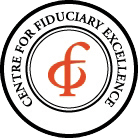 Paul Jamison, CEO
Paul Jamison, CEO
Paul wants to take care of key executives and reduce overall plan sponsor risk.
Company Overview
Industry/sector: manufacturing - specialty tool and die
Number of employees: 28
Plan assets: $4.75 million
Like many entrepreneurs, hard work, persistence, and a little luck allowed Paul Jamison and his younger brother, Sam, to build and grow a successful manufacturing company. For years, the brothers, along with most of their employees, made maximum annual 401(k) plan contributions. However, as owners, Paul and Sam needed to invest any additional money back into the growing specialty tool and die company and were not able to take advantage of the profit sharing option the plan provided.
Now that Paul and Sam are both empty nesters, neither has any personal debt, and the company is mature—they’re both in a position to invest less in the company and direct more income toward funding their retirement. In addition, Paul wants a strategy to help lower his and his brother’s tax bills, since both are currently subject to the highest marginal tax bracket.
Paul and Sam are also grateful for and want to recognize the tremendous contributions several key employees have made to the company’s success over the years, and are looking for a tax-efficient way to compensate those employees. As a plan fiduciary, Paul is well aware that greater liability continues to be placed on plan fiduciaries. He wants to make sure that he’s doing everything possible to help his employees pursue their retirement goals without subjecting himself and other plan fiduciaries to undue liability.
Paul was referred to 401(k) ProsperityTM by his CPA to help educate him on his options and discuss how 401(k) ProsperityTM can help him maximize the value of his retirement plan and address his goals. We recommended:
-
Revamping the plan from a profit sharing plan integrated with Social Security to a cross-tested profit sharing plan. We worked with the Third Party Administrator (TPA) to create a three-tiered program. Using this strategy, Paul and Sam could potentially receive 70% of the profit sharing contribution using a formula to divide the balance among their Level 1 and Level 2 employees.
-
Level 1 Standard Employees
-
Level 2 Key Employees
-
Level 3 Owners
-
Implementing a Cash Balance Retirement Plan, a type of defined benefit plan that would allow Paul and his brother to contribute approximately $230,000 each into their cash balance plan with a contribution of approximately $50,000 to all other employees. This created a significant tax deduction at the company level that benefits Paul and Sam.
-
Appointing 401(k) Prosperity™ along with LPL Financial as Section 3(38) investment managers to delegate fiduciary responsibility for all plan investments. In doing so, we would establish and implement an investment fiduciary management program and additional fiduciary protocols to quantify and manage risk to help minimize their risk exposure.
Client stories may not be representative of the results of all clients and are not indicative of future performance or success.







